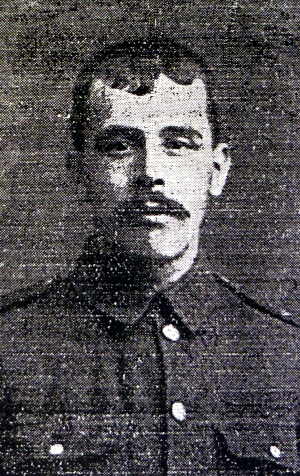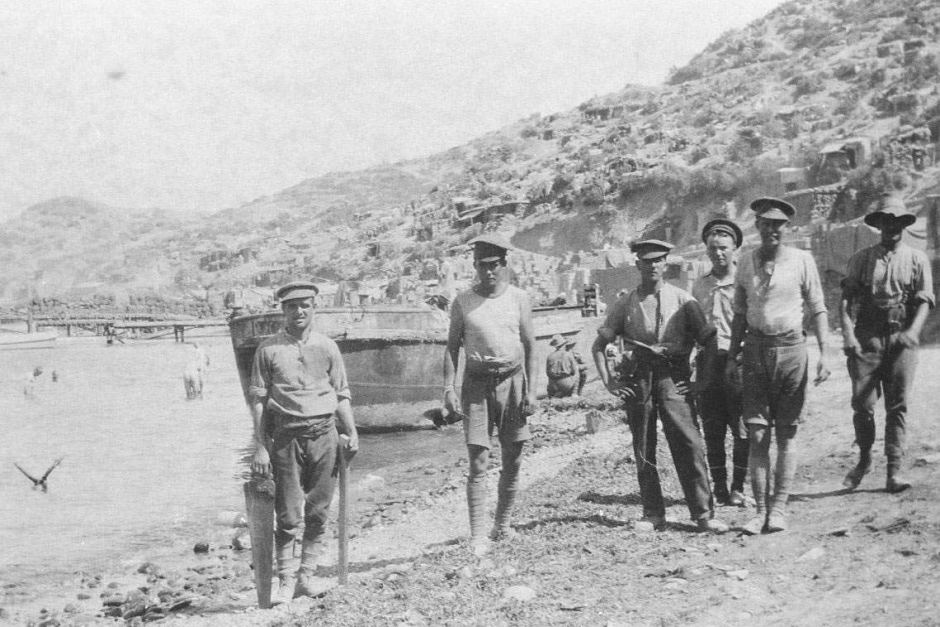
Herbert Illingworth was born in Ossett in late 1882, the son of Ossett-born tailor Walter Illingworth and his wife, Annice (nee Crabtree), who married in Spring 1877. The couple had two boys, Stephen and Herbert. In 1881, the couple lived on South Street, Ossett with their son Stephen, but in 1891 and 1901 Herbert Illingworth, latterly a colliery labourer, and his elder brother Stephen were living at the Teal Street, Ossett home and later the Baptist Lane, Ossett home of their widowed grandfather, Jacob Crabtree.
In 1901, living in the same household were Jacob‘s children, Harvey and Nanny Crabtree. Walter and Annice Illingworth appear to be elsewhere. Jacob Crabtree died in 1903 and his daughter Nanny married John William Tankard later that same year and they shared their home at 5, School Yard, Ossett with Nanny’s nephews Herbert and Stephen Illingworth. By now, Herbert was working as a coal miner at the local Roundwood pit. Herbert Illingworth’s mother Annice Illingworth (nee Crabtree) died in 1914, aged 58 years, in the Leeds Wharfedale Registration District.
Herbert Illingworth’s army service record has not survived but it is known that he enlisted at Pontefract and joined the Irish regiment, the Connaught Rangers. As such he is remembered on the “Ireland, Casualties of World War One, 1914-1918” listing on the same page as another Ossett man, Clifford Ibbotson. He is remembered in these terms: Illingworth Herbert. Reg No. 3367. Rank Acting Corporal. Connaught Rangers 5th Battalion; killed in action, Gallipoli, August 21, 1915; born Ossett, Yorkshire.
Herbert Illingworth embarked for the Balkans on the 21st July 1915 and was posthumously awarded the 1914/15 Star to recognise his service overseas before 31st December 1915, in addition to the British and Victory medals.
The 5th (Service) Battalion of the Connaught Rangers was formed at Dublin in August 1914 as part of K1 and placed under orders of 29th Brigade in 10th (Irish) Division. They moved to Kilworth and then went back to Dublin in October. The battalion moved to the Curragh in January 1915 and in May 1915, moved to Hackwood Park (Basingstoke). On the 9th July 1915, they embarked at Devonport and sailed to Gallipoli via Mudros, landing at Anzac Cove on the 5th August 1915. On the 30th September 1915, they moved via Mudros to Salonika and in September 1917, moved to Egypt for service in Palestine. On the 30th April 1918, the battalion left the Division and sailed from Port Said, arriving Marseilles on the 1 June. On the 23rd July 1918, the battalion came briefly under command of 14th (Light) Division, but on the 22nd July 1918, they were placed under the command of 197th Brigade in 66th (2nd East Lancashire) Division.
The Gallipoli campaign turned into a disaster and in August 1915, a second offensive began in an attempt to break the stalemate and get the Allied troops of the beaches and move inland. Fresh, mainly newly recruited soldiers were drafted from Britain including the 5th Battalion, Connaught Rangers. The 5th Connaught Rangers landed at Anzac Cove on the Peninsula in the early hours of August 6, 1915.
For the next seven weeks the Connaught Rangers fought desperately in the heat and misery of the Gallipoli Peninsula and took part in actions at Lone Pine, Sari Bair, Hill 60 and Kabak Kuyu. Two all-out attacks on the Turkish strong points on Hill 60 on August 21st and 28th 1915, resulted in very heavy casualties for the battalion, including Corporal Herbert Illingworth who was killed in action on the 21st August 1915.
“By this time companies had become very mixed, and the charge was composed of a crowd of men belonging to all the companies, mad with the lust for battle. Their officers did little to restrain them, for their Irish blood was aflame, and they were as eager as the men. The line surged up the bare exposed glacis, only to encounter tremendously heavy rifle and machine gun fire from the crest. At the same moment the enemy’s guns opened, displaying marvellous accuracy in ranging, and the attack was annihilated. In spite of this the men went on as long as they were able to stand, and fell still facing the foe. From the wells below their bodies could be seen, lying in ordered ranks on the hillside, with the bayonets pointing to the front.” 1
On September 29, 1915 the 5th Connaught Rangers were withdrawn to the Island of Lemnos in Greece. During the Gallipoli campaign the 5th Connaught Rangers suffered over 70% casualties with 22% fatalities. 686 officers and men were killed, wounded or taken prisoner. 220 officers and men were listed as killed or missing in action. The Gallipoli campaign had ended in utter failure and the Peninsula was evacuated in late December 1915.
The “Ossett Observer” 2 had this obituary for Herbert Illingworth:
“South Ossett Soldier Reported Killed – Lance-corporal Herbert Illingworth, of the 5th Connaught Rangers, an Ossett Common man well known in local football circles, is numbered among the many who have given their lives in the great struggle for right and liberty. Brought up at Ossett Common, he worked for many years at the Old Roundwood Collieries. He was an enthusiastic football player, having identified with several clubs in the district, and at one time with Brighouse Rangers. About 35 years of age, and unmarried, he was employed at Hemsworth at the outbreak of the war, and allowed little time to elapse before enlisting in the army.”

Above: Allied soldiers at Anzac Cove, Gallipoli in 1915
Corporal Herbert Illingworth, aged 32 years, died on the 21st August 1915. He is remembered on Panel 181 to 183 at the Helles Memorial, 3 Turkey (including Gallipoli). The Helles Memorial stands on the tip of the Gallipoli Peninsula. It takes the form of an obelisk over 30 metres high that can be seen by ships passing through the Dardanelles.
The eight month campaign in Gallipoli was fought by Commonwealth and French forces in an attempt to force Turkey out of the war, to relieve the deadlock of the Western Front in France and Belgium, and to open a supply route to Russia through the Dardanelles and the Black Sea.
The Allies landed on the peninsula on 25-26 April 1915; the 29th Division at Cape Helles in the south and the Australian and New Zealand Corps north of Gaba Tepe on the west coast, an area soon known as Anzac. On 6 August, further landings were made at Suvla, just north of Anzac, and the climax of the campaign came in early August when simultaneous assaults were launched on all three fronts. However, the difficult terrain and stiff Turkish resistance soon led to the stalemate of trench warfare. From the end of August, no further serious action was fought and the lines remained unchanged. The peninsula was successfully evacuated in December and early January 1916.
The Helles Memorial serves the dual function of Commonwealth battle memorial for the whole Gallipoli campaign and place of commemoration for many of those Commonwealth servicemen who died there and have no known grave.
The United Kingdom and Indian forces named on the memorial died in operations throughout the peninsula, the Australians at Helles. There are also panels for those who died or were buried at sea in Gallipoli waters. The memorial bears more than 21,000 names.
There are four other Memorials to the Missing at Gallipoli. The Lone Pine, Hill 60, and Chunuk Bair Memorials commemorate Australian and New Zealanders at Anzac. The Twelve Tree Copse Memorial commemorates the New Zealanders at Helles. Naval casualties of the United Kingdom lost or buried at sea are recorded on their respective Memorials at Portsmouth, Plymouth and Chatham, in the United Kingdom.
References:
1. “The Tenth (Irish) Division”, (Dublin 1993), Major Bryan Cooper, p. 108.
2. “Ossett Observer”, 28th October 1916